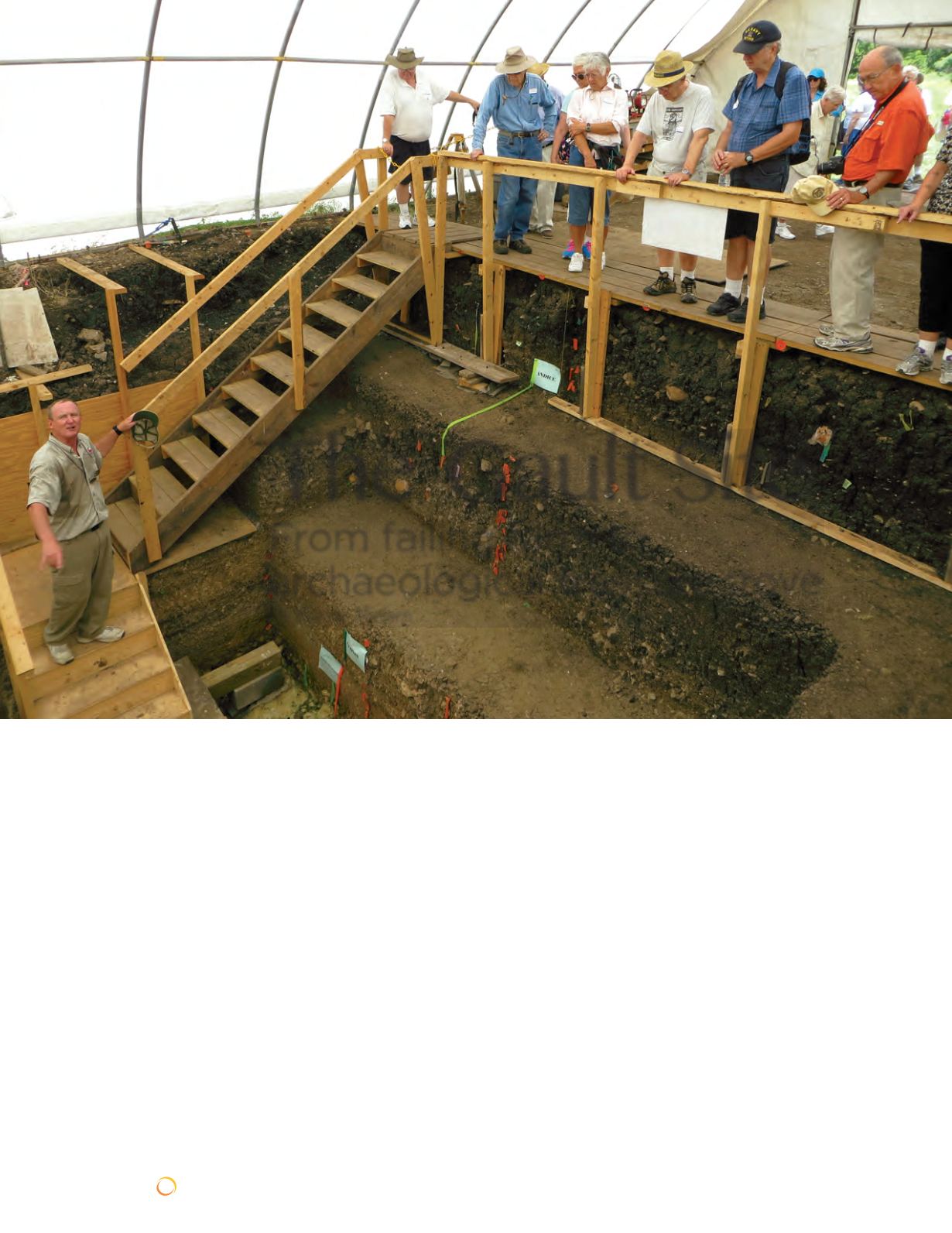
58
| SUNRAYS SEPTEMBER 2014
ONLINE:
SCTXCA.ORG
The Gault Site
From failing farm to
archaeological treasure trove
By Sandy Nielsen
Senior University participants view a current dig, as Dr. Wernecke describes artifacts found at various levels.
H
enry Gault could not figure out
how to successfully farm the
rocky fields and ravines that he
owned just outside Florence, Texas, in
1929 – but when his efforts to till the soil
started turning up chipped-flint spear
points and tools, he had an idea. He in-
vited J. E. Pearce, the first anthropologist
at The University of Texas, to take a look
at the artifacts that kept surfacing, and
later made money on a pay-to-dig opera-
tion that attracted other collectors.
The site, which would become a world-re-
nowned dig site relating to early American
peoples, is located a scant 13 miles north-
west of Sun City Texas. Scientific dating
has demonstrated human population in
the area as long as 17,000 years ago, the
result of a confluence of assets: reliable
water, plentiful wildlife and edible plants,
and the largest supply in North America
of the finest quality stone for tools.
Scientists call this culture “Clovis,” after
a site near Clovis, New Mexico, where
stone artifacts were found with extinct
mammals. The earliest named culture
in the Americas, Clovis artifacts have
been found fromCanada to Venezuela. Its
people had an intimate understanding of
the environment and the land.
Today, the nonprofit Gault School of
Archaeological Research in San Mar-
cos – directed by D. Clark Wernecke,
PhD – oversees the Gault Site. On a
recent steamy spring day, Dr. Wernecke
took 54 Senior University participants
on a three-hour walk-and-talk through
the site. With infectious enthusiasm, he
detailed the surprises yielded over the
years by the dig:
• Stones with engraved designs that
have been dated at 13,000 years old,
making them among the oldest art in
the Americas
• The location of a mammoth kill,
complete with the lower jawbone of
a mammoth and a Clovis projectile
point
• The stone floor of an ancient structure
that may be the oldest known archi-
tecture in North America
• Evidence of a culture older than Clo-
vis, dating back as much as 17,000
years, which has led to new thinking
PHOTOS BY SANDY NIELSEN


